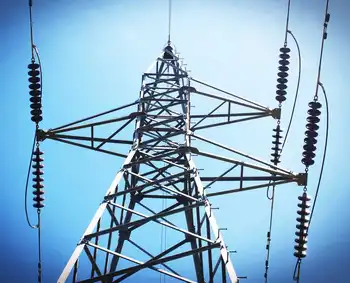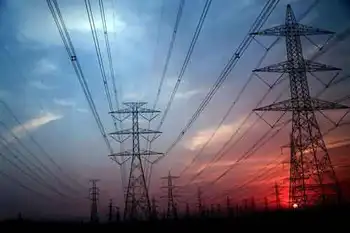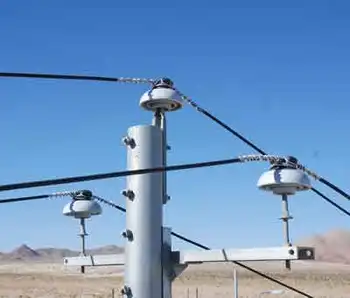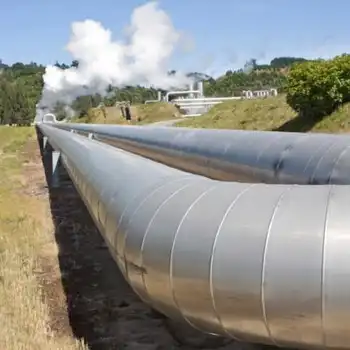Let the falls flow all year, federal agency told: Dam licensing hearing draws abut 100 people
By The Spokesman-Review
Arc Flash Training CSA Z462 - Electrical Safety Essentials
Our customized live online or in‑person group training can be delivered to your staff at your location.

- Live Online
- 6 hours Instructor-led
- Group Training Available
The question now is, how much water should Avista be required to run in the river during the summer? The answer will be handed down by the Federal Energy Regulatory Commission as it issues new licenses for the utility's five river dams. FERC held public hearings on a draft environmental impact statement recently that drew about 100 people.
Avista proposes a baseline flow of 200 cubic feet of water per second, perhaps enough to tumble across the north channel of the falls near Clinkerdagger restaurant during daylight hours.
Some state agencies and other interests such as the city of Spokane and the Spokane Regional Chamber of Commerce (now called Greater Spokane Inc.) say the company's plan appears adequate. But if such a flow falls short of expectations, the business community and local government want the right to ask for more water.
Yet many residents and businesspeople said they want more than twice that much water pouring through the channel, claiming that the rugged beauty of the falls is just the sort of natural wonder that brands the city as "Near Nature, Near Perfect" and drives job recruitment and economic gain.
Don Sheridan said when Avista diverts water from the falls into powerhouses, it deprives the city of its main attraction. He said it is as if Avista were to drop the level of Lake Coeur d'Alene by 10 feet for the summer.
"The river is becoming that important to Spokane," he said.
Don Barbieri, the chairman of Red Lion Hotels Corp. who is building millions of dollars worth of downtown condominiums on the north bank of the Spokane River, asked FERC officials at the hearing to require that Avista run at least 500 cubic feet of water per second down the north channel of the Spokane Falls all year long. It's a position advocated by the Sierra Club that Avista calls an 11th-hour attempt to muddy a seven-year collaborative effort.
Avista is not now bound to run water over the falls during the summer, so residents will see a big change during those dry months no matter what FERC decides. For perspective, the April runoff last year was about 20,000 cubic feet of water per second, according to FERC.
Andrew Stenbeck of the Washington Department of Natural Resources called the Sierra Club's push for more water for the falls an aesthetic, subjective argument rather than something that would make the river a better fishery.
Scott Forsell, with Bureau of Land Management, added that a working group of about 40 people studied river flows and determined that by doing some riverbed modifications, the baseline flow proposed by Avista is expected to make eye-pleasing aesthetic improvements to what is now an often dry riverbed for weeks during downtown's showcase summer months.
Some speakers, including John Dixon, found the whole idea that any organization could physically turn off the waterfalls as if it were a faucet, inconceivable.
Other speakers spoke of a need to help the Spokane River's struggling fishery.
While debate churns about the Spokane River falls, Avista's larger hurdle is how to reach agreement with the Coeur d'Alene Tribe, whose members want Avista to make reparations for decades of environmental and cultural degradation and run the dams, including Post Falls, in ways more in sync with natural cycles.
The company attempted to reach a sweeping compromise through a collaborative relicensing process that began five years ago. Sometimes it worked, and often it failed.
Most notably, it failed with the tribe, and the sides had to argue their positions to an administrative law judge. The findings are now being reviewed, and the U.S. Department of the Interior, representing tribal interests, will place conditions on Avista's new license.
Avista and the tribe have exchanged tough words in recent years, especially after Avista decided to ask FERC to split its relicensing request into two parts - one for the dams in Spokane County, and another for the Post Falls Dam that regulates the water level of Lake Coeur d'Alene. Together, the five dams generate a fraction of the electricity that Avista sells to customers.
Avista once said complying with tribal demands could cost $500 million to be borne by ratepayers and thus wanted such a thorny issue separated from what it assumes will be smoother success at earning a new license to operate its four other dams including Little Falls, Nine Mile, Monroe Street and Upper Falls.
The tribe says such estimates are fear-mongering nonsense aimed at nothing but riling up ratepayers to turn on the tribe.
A tribal official also disputed rumors that the tribe wants to draw down the lake.
Bruce Howard, Avista's Spokane River project manager, said the company is committed to keep working with the tribe and will carry out whatever terms are outlined by the new license.
Lindell Haggin told FERC she wondered about the wisdom of awarding a license for 30 to 50 years when issues affecting the river are changing so quickly with technology, climate change and property developments along the river.
John Blair, who is FERC's relicensing project manager, said such concerns are legitimate but added that the federal agency now uses what he called an adaptive management technique to offer flexibility to long-range licensing.
FERC will accept comments on the draft environmental impact statements until March 6.











